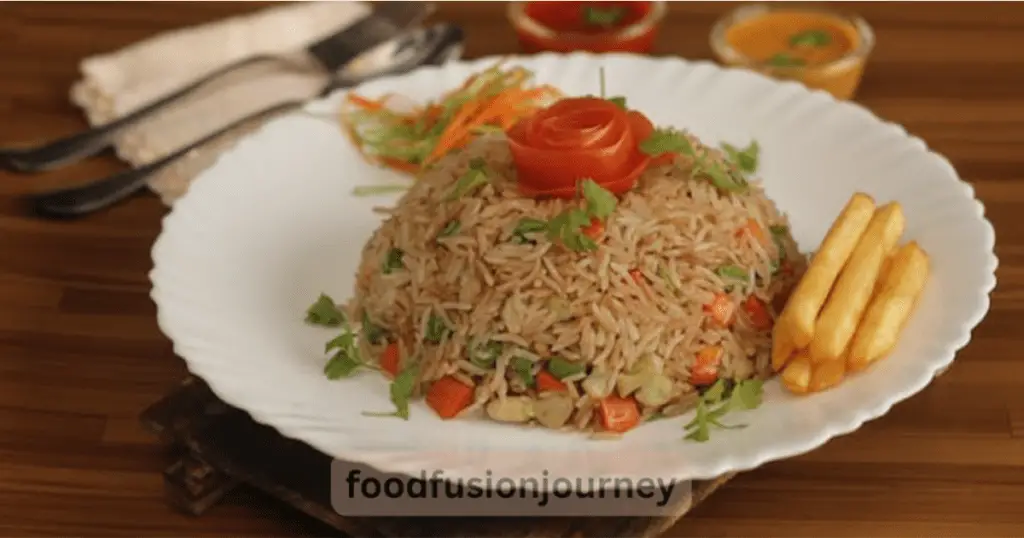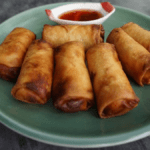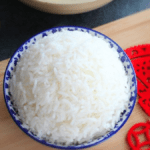A homemade fried rice easy and flavorful recipe. Made with cooked white rice mixed vegetables, eggs, and savory seasonings this dish is a perfect balance of taste and simplicity. Enjoy a quick and satisfying meal that the whole family will love.
Gallery Of Fried Rice
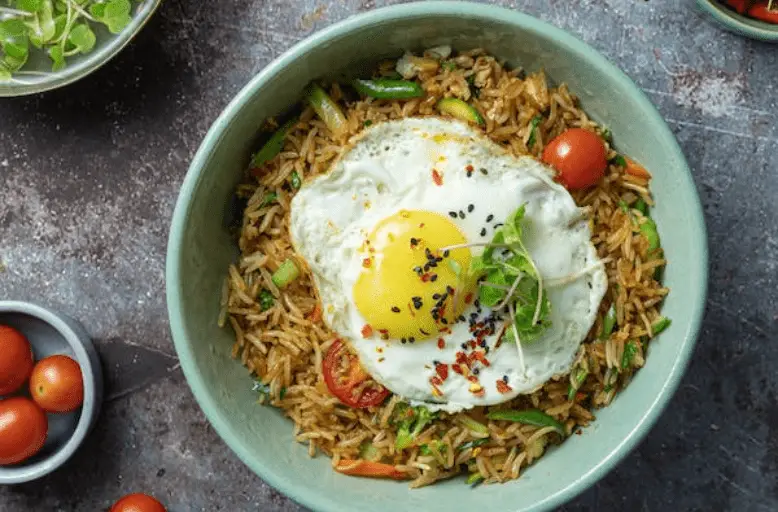

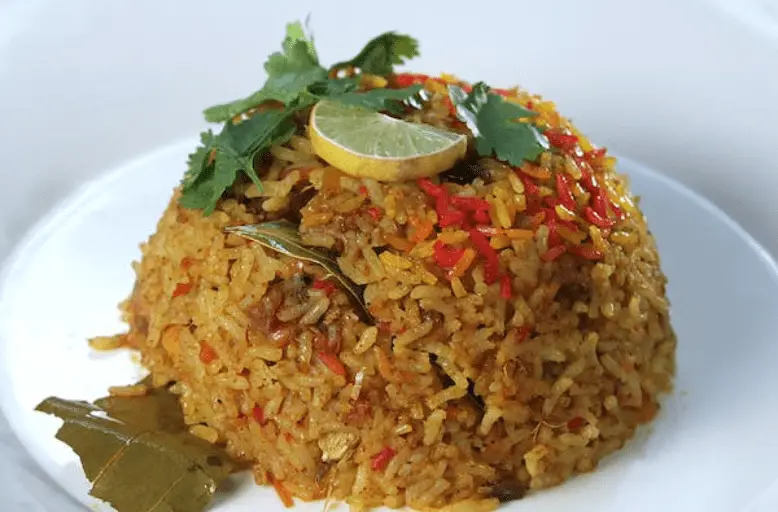
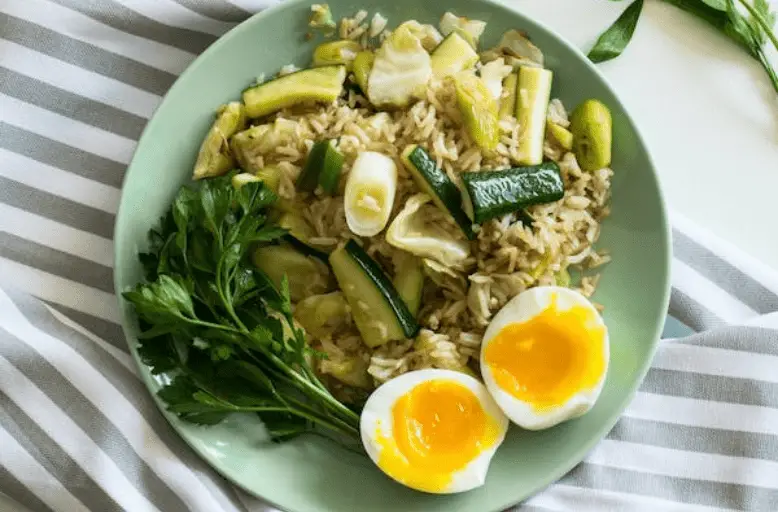
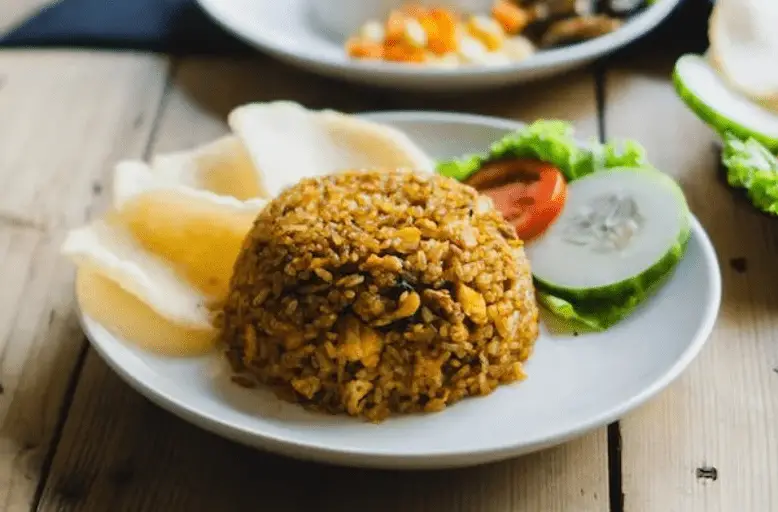
Ingredients
3 cups cooked white rice (day-old rice works best)
2 tablespoons vegetable oil or sesame oil
1 cup diced mixed vegetables (carrots, peas, corn, bell peppers, etc.)
1/2 cup diced onions
2 cloves garlic, minced
2 eggs, lightly beaten
3 tablespoons soy sauce
1 tablespoon oyster sauce (optional, for added flavor)
1/2 teaspoon salt (adjust to taste)
1/4 teaspoon black pepper
2 green onions (scallions), sliced for garnish
Instructions
1/ Heat a large skillet or wok over medium-high heat. Add 1 tablespoon of vegetable oil (or sesame oil) and let it heat up.
2/ Add the diced onions and sauté for about 2 minutes until they become translucent.
3/ Push the onions to one side of the skillet and pour the beaten eggs on the other side. Scramble the eggs until they are fully cooked.
4/ Now, add the remaining vegetable oil (or sesame oil) to the skillet and add the minced garlic. Sauté for about 30 seconds until the garlic becomes fragrant, but be careful not to burn it.
5/ Add the diced mixed vegetables to the skillet and stir-fry for about 3-4 minutes until they are slightly tender.
6/ Add the cooked white rice to the skillet and break up any clumps with a spatula. Mix the rice and vegetables together until they are evenly combined.
7/ Drizzle the soy sauce and oyster sauce (if using) over the rice and toss everything together until the sauces are well distributed.
8/ Season the fried rice with salt and black pepper to taste. Continue to stir-fry for an additional 2-3 minutes to allow the flavors to meld.
9/ Once the rice is heated through and well combined, remove the skillet from the heat.
10/ Garnish the rice with sliced green onions (scallions) for added freshness and color.
Serving
Fried rice tastes best when served hot and fresh. Avoid reheating it multiple times, as it may become dry.
Your delicious homemade rice is ready to be served! It can be enjoyed as a meal on its own or as a side dish with your favorite protein. Enjoy!
Tips and Tricks to Elevate Your Cooking
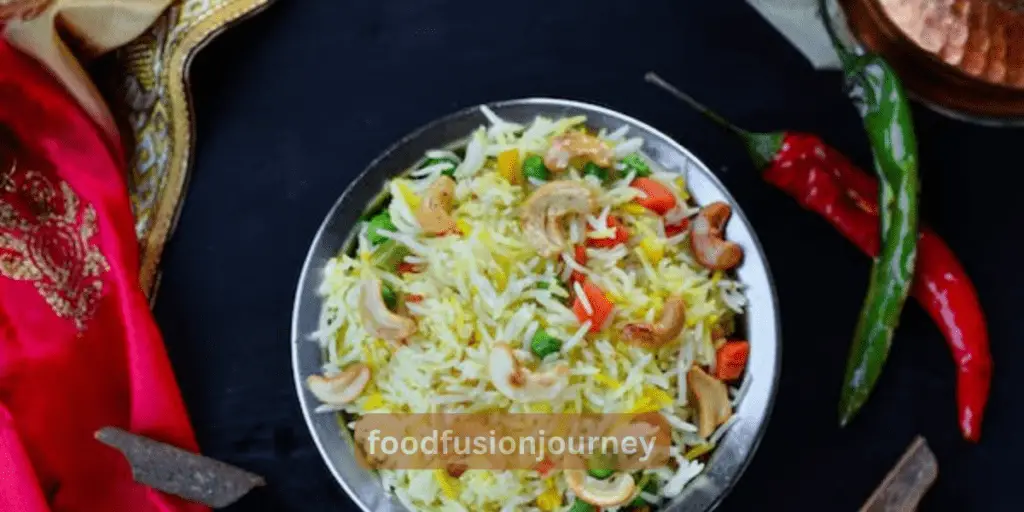
Use Cold Cooked Rice: For the best texture, use day-old rice that has been cooked and refrigerated. Cold rice separates easily and prevents the rice from becoming mushy.
High Heat Cooking: Stir-frying is all about high heat. Use a well-heated wok or skillet to quickly cook the ingredients while maintaining their crunchiness.
Precook Vegetables: Some vegetables, like carrots and broccoli, take longer to cook. Precook them by blanching or microwaving before stir-frying to ensure they’re cooked to perfection in the fried rice.
Create a Well in the Center: When stir-frying, push the ingredients to the sides of the wok or skillet, creating a well in the center. This allows you to scramble the eggs or add sauces without them immediately spreading across the whole pan.
Don’t Overload the Wok: Stir fry in small batches to avoid overcrowding the wok. Overcrowding leads to uneven cooking and steaming instead of stir-frying.
Sauce Balance: Be cautious with the amount of sauce you add. Start with a small amount and gradually increase to your taste preference. Too much sauce can make the rice soggy.
Flavorful Oils: Use oils like sesame oil for added flavor. You can use vegetable oil for stir-frying and add a few drops of sesame oil at the end for a delightful aroma.
Customizable Ingredients: Feel free to experiment with different proteins (chicken, shrimp, tofu), vegetables, and seasonings to create your favorite rice variation.
Season with Soy Sauce: Soy sauce is a key seasoning for fried rice. Add it gradually and taste as you go, as the saltiness can vary between brands.
Garnish with Fresh Herbs: Sprinkle chopped green onions, cilantro, or fresh basil on top of the rice for a burst of color and additional flavor.
Serve Hot: Fried rice tastes best when served hot and fresh. Avoid reheating it multiple times, as it may become dry.
With these tips and tricks, you’ll master the art of making delicious rice that’s both satisfying and bursting with flavors! Enjoy your homemade fried rice!
Nutrition Facts
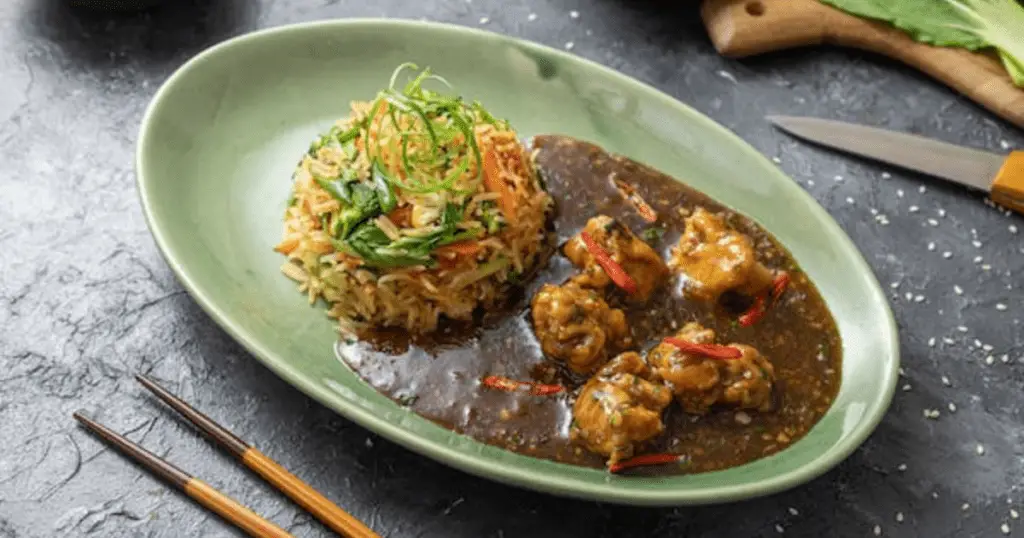
Here are the approximate nutrition facts for a generic serving of fried rice, which can vary depending on the specific ingredients and portion size.
Serving Size: 1 cup (approximately 200-250 grams)
Calories: Around 200-300 calories per serving
Protein: Approximately 5-10 grams
Carbohydrates: About 30-40 grams
Dietary Fiber: 1-2 grams
Sugars: 2-3 grams
Total Fat: Approximately 5-10 grams
Saturated Fat: 1-2 grams
Cholesterol: Varies depending on ingredients (e.g., shrimp, chicken, tofu, or no meat)
Sodium: Approximately 800-1000 milligrams, but this can vary based on ingredients and soy sauce usage
Vitamins and Minerals: Fried rice may provide varying amounts of vitamins and minerals, including vitamin A, vitamin C, calcium, and iron. The specific content can depend on the ingredients used and the cooking method.
Frequently Asked Questions (FAQs)
What is fried rice?
A dish made from cooked rice stir-fried in a wok or skillet with various ingredients such as vegetables, eggs, meats (like chicken, pork, shrimp), and seasonings.
What type of rice is best for making fried rice?
Long-grain rice such as Jasmine or Basmati rice works well for fried rice due to its texture and ability to stay separate when cooked. However, leftover rice that has been refrigerated for a day or two often yields better results as it’s slightly dried out and less sticky.
Do I need to use leftover rice for fried rice?
Using leftover, cooled rice is preferred for fried rice because it tends to be less sticky and clumpy compared to freshly cooked rice. However, if using freshly cooked rice, spread it out on a tray after cooking and let it cool for a while before using it for fried rice.
How do I prevent fried rice from turning out mushy?
To prevent mushy fried rice, use cooled, leftover rice or ensure freshly cooked rice isn’t overly moist. Stir-fry the rice over high heat in a well-heated pan, and avoid adding too much sauce or liquid ingredients that can make it soggy.
What vegetables can I use in fried rice?
Common vegetables used in fried rice include diced carrots, peas, bell peppers, onions, broccoli, corn, and beans. Ensure they are chopped finely or precooked slightly to ensure they cook quickly when stir-fried.
Can I make vegetarian or vegan fried rice?
Absolutely! Fried rice can easily be made vegetarian or vegan by omitting meat and using tofu or tempeh as a protein source. Use vegetable-based sauces like soy sauce or tamari and skip eggs if following a vegan diet.
How do I add flavor to fried rice?
Flavor in fried rice comes from seasonings like soy sauce, oyster sauce, sesame oil, garlic, ginger, and sometimes a hint of rice vinegar.
Can I freeze fried rice?
Yes, fried rice can be frozen. When reheating, add a little moisture (like water or broth) to prevent it from drying out during reheating.
Is fried rice gluten-free?
Traditional fried rice often contains soy sauce, which typically contains gluten. However, gluten-free soy sauce or tamari can be used to make gluten-free fried rice.
What can I serve with fried rice?
Fried rice can be a standalone dish or served alongside various Asian-inspired dishes such as stir-fries, spring rolls, or with a side of grilled meats or tofu.
